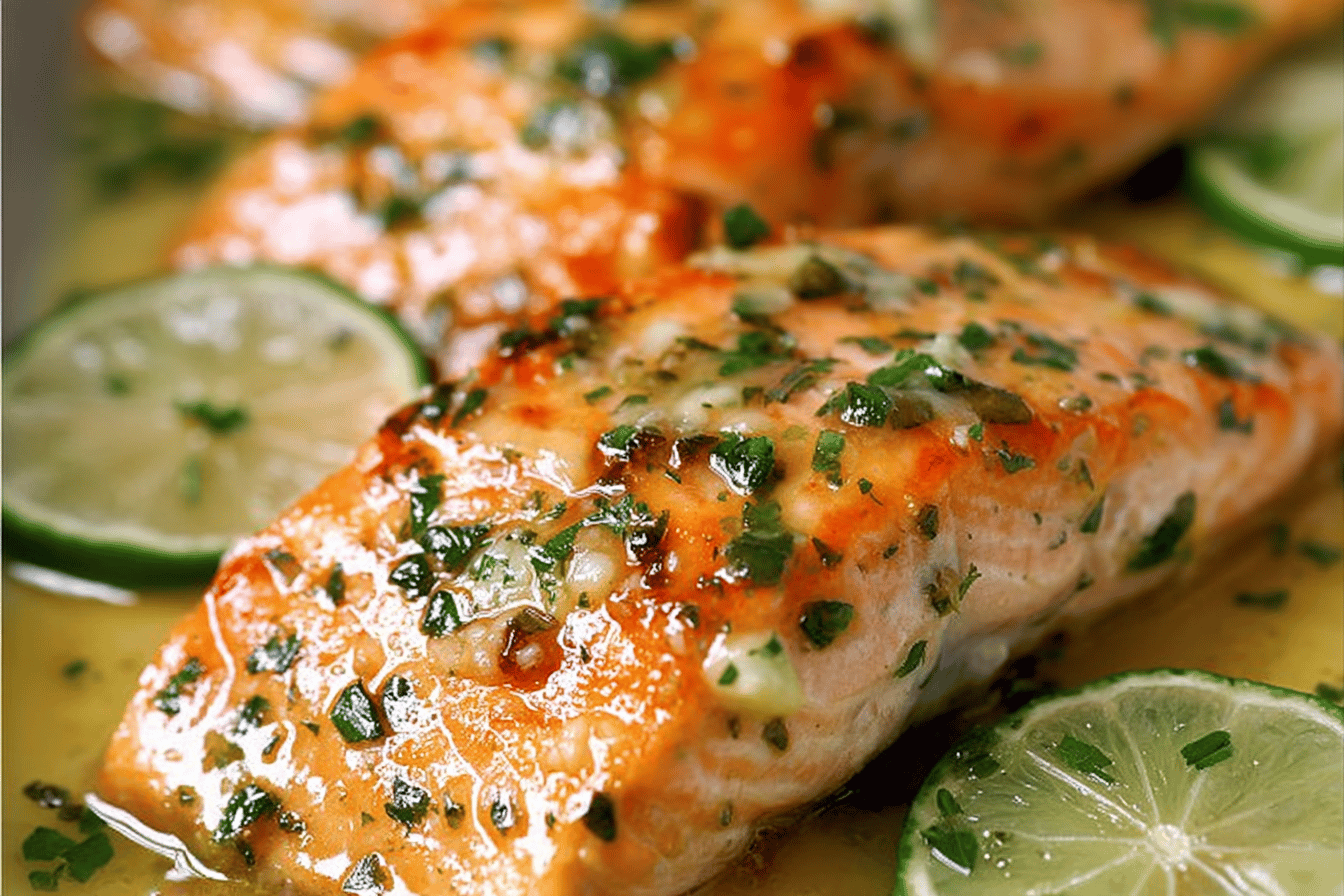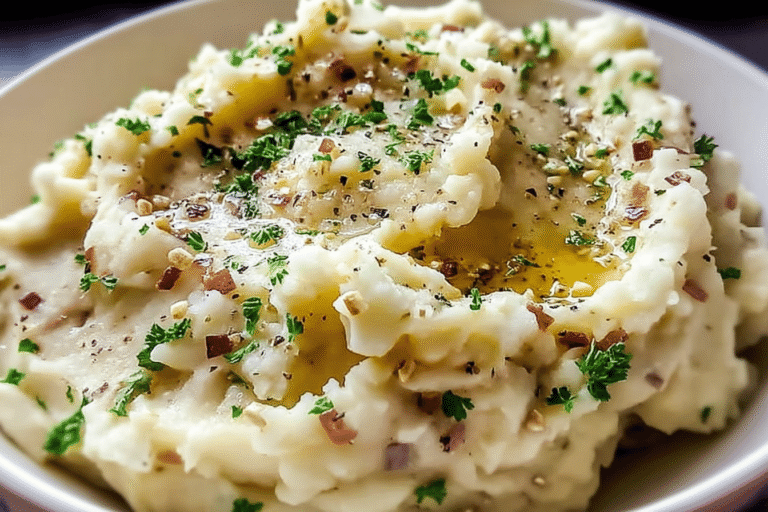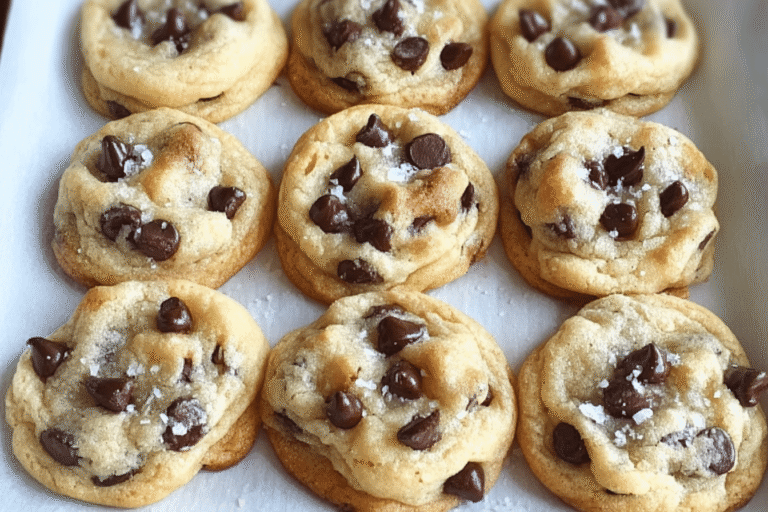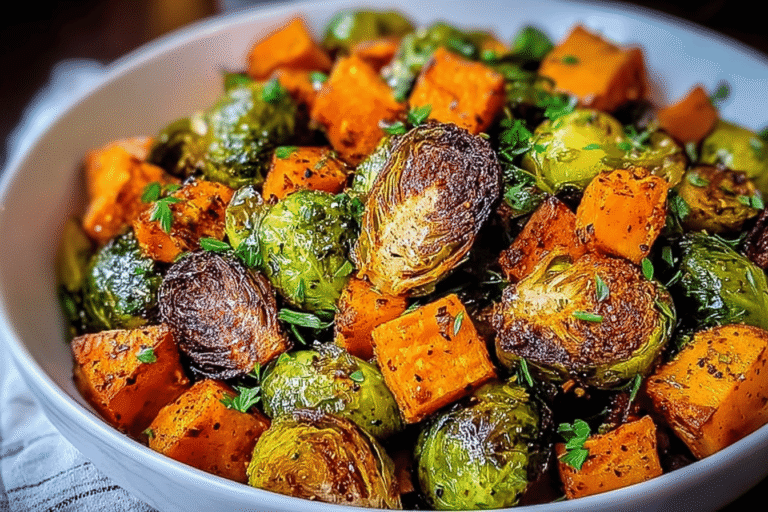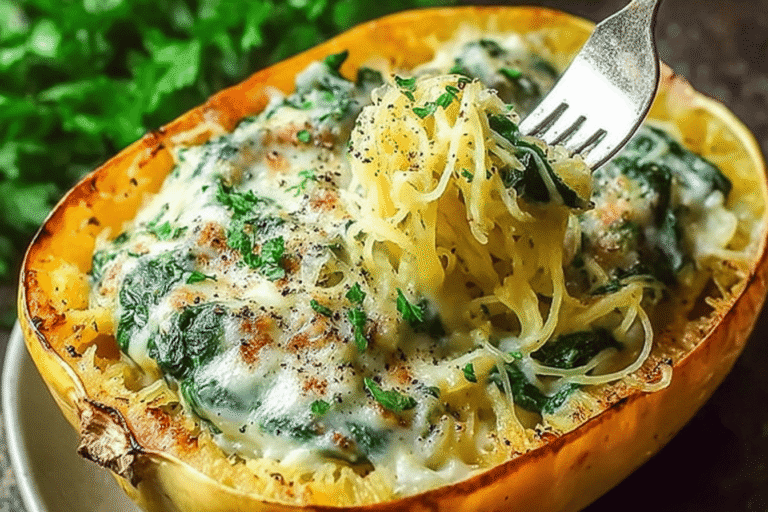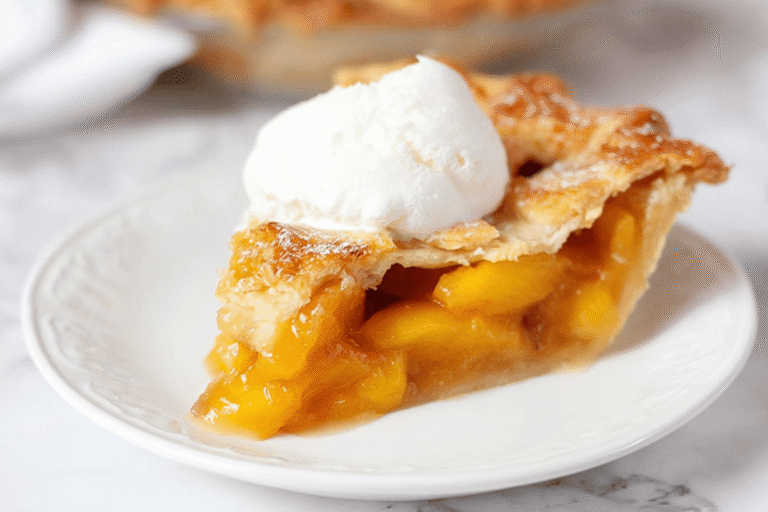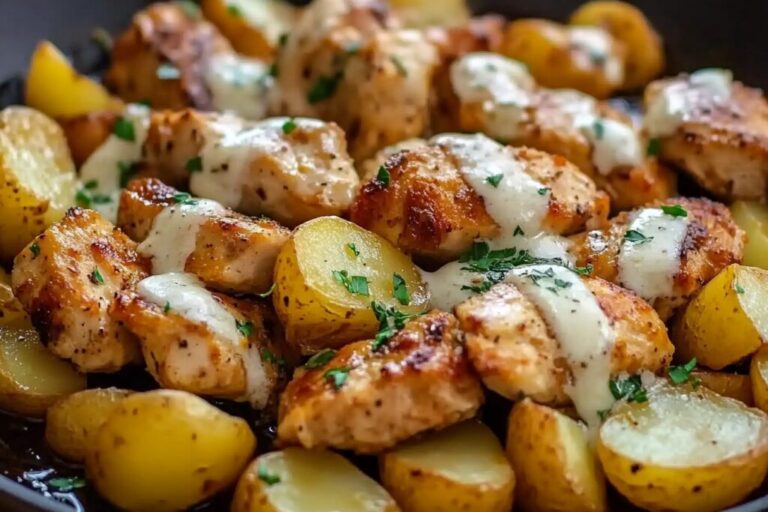Baked Garlic Butter Salmon
Introduction
Salmon lovers, prepare to have your taste buds blown away. This revolutionary way to prepare salmon will make it your go-to dish every single time. Whether you’re a seasoned cook or trying your hand at salmon for the first time, this recipe brings out the full potential of this delectable fish. Perfectly flaky, bursting with flavor, and incredibly simple to make, it’s safe to say you’ll never want to eat salmon any other way again. Let’s dive into the details and get started on this must-try culinary adventure.
Detailed Ingredients with measures
Salmon fillets
Choose fresh or frozen fillets. Around 1-1.5 pounds are recommended.
Olive oil
A couple of tablespoons to coat the salmon and ensure it cooks to perfection.
Garlic powder
Add about 1 teaspoon for a subtle, savory depth.
Paprika
Just a teaspoon for a hint of smoky flavor.
Salt and pepper
Season to taste.
Lemon juice
Use the juice of about 1 lemon to enhance the freshness.
Fresh dill
Chop 1 tablespoon to sprinkle on top for added brightness.
Optional sides
Pair with roasted vegetables, rice, or a fresh salad for a complete meal.
Prep Time
Preparation is quick and straightforward. Expect to set aside approximately 10 minutes to gather and prepare your ingredients. This includes measuring spices, seasoning the salmon, and preheating your oven or stovetop.
Cook Time, Total Time, Yield
Cook time usually takes about 15-18 minutes, depending on the thickness of your fillets and the method. Taking the prep and cook time together, the total time is under 30 minutes, making this an ideal recipe for a weeknight dinner or impromptu gathering. Yield varies, but typically serves 2-4, depending on portion sizes.
Detailed Directions and Instructions
Step 1: Prepare the Salmon
– Begin by rinsing your salmon fillets under cold water and pat them dry with paper towels.
– Place the salmon fillets on a clean cutting board, skin-side down, if the skin is still attached.
Step 2: Preheat the Oven
– Set your oven to 375°F (190°C) and allow it to preheat thoroughly while you prepare the salmon.
Step 3: Prepare the Baking Dish
– Grab a suitable baking dish or sheet, and grease the bottom lightly using cooking spray, olive oil, or butter.
– If using aluminum foil for easier cleanup, line the baking dish with foil before greasing.
Step 4: Season the Salmon
– Season the salmon fillets generously with your preferred seasonings, ensuring even coverage. Common seasonings include salt, pepper, garlic powder, lemon juice, or a dash of paprika for added flavor.
– Optionally, add a drizzle of olive oil, honey, or melted butter to enhance the taste further.
Step 5: Add Toppings (Optional)
– Depending on the recipe, you may add additional toppings such as herbs, minced garlic, or a glaze. A honey mustard glaze or a mix of brown sugar with soy sauce pairs well with salmon.
Step 6: Bake the Salmon
– Place the seasoned salmon fillets into the preheated oven.
– Bake for approximately 12-15 minutes, depending on the fillet’s thickness. For a thicker cut, you may need to bake for 18-20 minutes.
– Use a meat thermometer to ensure the salmon has reached an internal temperature of 145°F (63°C).
Step 7: Broil for a Crispy Finish (Optional)
– For a crispier top, turn the oven to the broil setting in the final 2-3 minutes of cooking. Keep a close eye to prevent burning.
Step 8: Rest and Serve
– Remove the salmon from the oven and allow it to rest for 3-5 minutes before serving. This helps lock in the flavors.
– Garnish with freshly chopped parsley, lemon wedges, or a sprinkle of extra seasoning before serving, if desired.
Notes
Note on Cooking Time
– Be mindful of the fillet thickness. Adjust cooking time to ensure the salmon is well-cooked but not overdone. A thinner cut will require less time to cook.
Note on Seasoning
– Always taste test your seasoning mixtures before applying them to the fish to ensure the flavors are balanced.
Note on Baking Dish
– A glass or ceramic baking dish works well for salmon as it retains heat evenly. However, if you prefer a crispier texture, use a metal baking sheet.
Note on Broiling
– Broiling adds a delightful texture contrast, but it can easily overcook or burn the fish. Always keep a close eye during this process.
Note on Leftovers
– If you have leftovers, store them in an airtight container in the fridge. Reheat gently the next day, ideally in the oven to avoid drying out.
Note on Substitutions
– You can substitute fresh salmon with frozen fillets if needed. Thaw the frozen fillets completely before seasoning and cooking.
Cook techniques
Preheat your oven
To achieve the perfect texture and flavor, ensure your oven is preheated to the specified temperature before cooking.
Prepare your baking dish
Use a baking dish that fits your salmon fillet snugly and allows the ingredient’s flavors to combine nicely. Grease it lightly for easier cleanup.
Combine flavors for a unique glaze
Mix your glaze ingredients thoroughly in a separate bowl. Aim for a smooth consistency that can coat the salmon evenly.
Apply glaze generously
Brush or pour the glaze over the salmon fillets, ensuring they are fully coated for optimal flavor during baking.
Monitor internal temperature
While baking, check the salmon’s internal temperature using a thermometer to ensure it doesn’t overcook. Ideally, it should reach around 145°F.
Let it rest before serving
Allow the cooked salmon to rest for a couple of minutes after removing it from the oven. This step helps retain juices and ensures every bite is flavorful.
FAQ
What kind of salmon is best for this recipe?
Fresh or thawed salmon fillets work best. Look for high-quality cuts to enhance the overall flavor experience.
Can I adjust the glaze ingredients?
Yes, you can modify the glaze components to suit your taste preferences. Stay mindful of balancing sweet, salty, and tangy flavors.
What’s the best way to check if my salmon is done?
Use a food thermometer to check the internal temperature. The salmon should reach 145°F for it to be fully cooked and safe to eat.
Are there any substitute ingredients for the glaze?
If you lack an ingredient, like honey or a certain spice, look for alternatives that provide similar sweetness or flavor profiles.
Can I use frozen salmon for this recipe?
Yes, but make sure the salmon is fully thawed and pat it dry before cooking to ensure even baking and flavor absorption.
How do I store leftover salmon?
Store leftovers in an airtight container in the refrigerator. They can be reheated and consumed within 2-3 days for the best results.
Is this recipe kid-friendly?
Yes, the sweet and flavorful glaze makes this recipe appealing to most kids, but adjust spices if needed based on their taste preferences.
What sides pair well with this dish?
Consider serving this salmon with steamed vegetables, rice, mashed potatoes, or a fresh salad for a balanced meal.

Conclusion
This recipe transforms salmon into something truly extraordinary and unforgettable. The unique combination of flavors enhances the natural richness of the fish, making it a standout dish that impresses at any table. After indulging in this dish, you may never want to cook salmon any other way again. It’s a testament to how simple, high-quality ingredients can elevate the ordinary into something absolutely sublime.
More recipes suggestions and combination
Honey Garlic Glazed Salmon
Combine the sweetness of honey and savory garlic for a perfectly caramelized salmon dish that pairs wonderfully with steamed broccoli or rice.
Teriyaki Salmon with Sesame Seeds
Create a quick and flavorful marinade using teriyaki sauce, then finish with a sprinkle of sesame seeds. Serve it alongside stir-fried vegetables.
Salmon with Lemon Herb Butter
Top salmon fillets with a mixture of butter, fresh herbs, and lemon zest before baking. This dish pairs excellently with roasted asparagus.
Spicy Cajun Salmon
Rub the salmon with a bold Cajun spice blend and pan-sear it for a spicy, flavorful kick. Serve it over creamy mashed potatoes.
Salmon Pasta in Creamy Dill Sauce
Flake cooked salmon and toss it into a creamy dill sauce over pasta for a comforting and delicious meal.
Baked Salmon with Pesto
Spread a generous layer of basil pesto over salmon fillets before baking. Pair it with a fresh green salad or roasted baby potatoes.
Maple Soy Glazed Salmon
Mix maple syrup and soy sauce for a savory and sweet glaze that caramelizes beautifully in the oven. Serve this dish with quinoa or wild rice.
Salmon Tacos with Avocado Salsa
Use grilled salmon in soft tortillas and top with creamy avocado salsa and shredded cabbage for a fresh, zesty twist on tacos.

